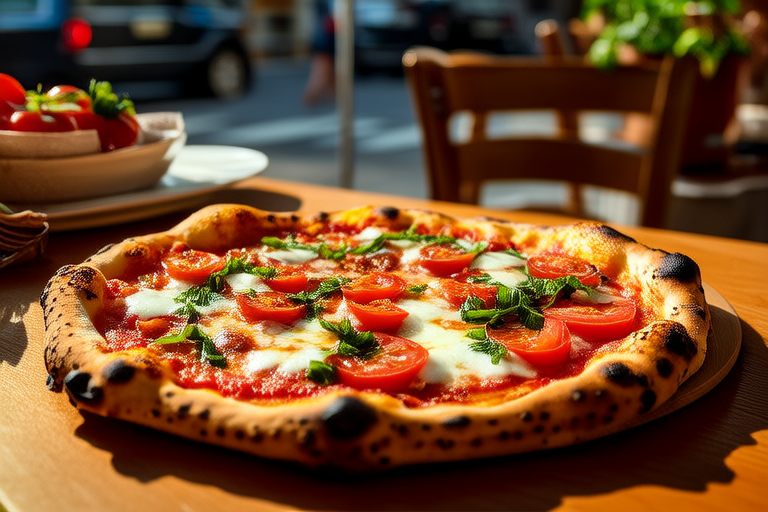Indulge in Global Flavors: A Traveler’s Guide to Gourmet Destinations

Indulge in Global Flavors: A Traveler’s Guide to Gourmet Destinations
Introduction
Gourmet travel has become increasingly popular among adventurers seeking more than just picturesque landscapes. This trend highlights the rich diversity of global cuisines and the unique ways different cultures express themselves through food. From street food stalls to Michelin-starred restaurants, travelers have ample opportunities to immerse themselves in local culinary traditions. Each dish tells a story about the region’s history, geography, and people, offering a deeper connection to the places visited.
Culinary experiences are not only about tasting delicious meals but also about understanding the cultural significance behind them. By exploring local markets, attending cooking classes, and engaging with chefs, travelers can gain insights into the nuances of various gastronomic traditions. This article aims to guide you through some of the world’s most renowned gourmet destinations, providing tips on how to fully embrace the local flavors.
Top Gourmet Destinations
Tokyo, Japan
Tokyo is a bustling metropolis where tradition meets modernity, offering an unparalleled culinary experience. Known for its sushi, ramen, and tempura, Tokyo boasts a wide array of dining options ranging from small family-run eateries to upscale establishments.
Iconic dishes include sushi made with fresh fish caught daily, tempura battered and fried to perfection, and ramen with rich broths and noodles. Must-visit spots include Sukiyabashi Jiro, famous for its sushi, and Tsukiji Outer Market, one of the largest wholesale fish markets globally.
Bordeaux, France
Bordeaux is synonymous with fine wine and exquisite French cuisine. Located in southwestern France, this region is celebrated for its vineyards and world-class wines. The city itself offers a blend of historical charm and contemporary elegance.
Signature dishes include duck confit, foie gras, and Bordeaux stew. For a memorable dining experience, consider visiting Le Pressoir d’Argent or La Tupina. Both restaurants offer traditional French fare with a modern twist.
Mexico City, Mexico
The capital of Mexico is a melting pot of indigenous and Spanish influences, resulting in a vibrant and diverse culinary scene. Mexican cuisine is characterized by bold flavors and colorful presentations.
Must-try dishes include tacos al pastor, mole poblano, and chiles en nogada. Pujol, run by renowned chef Enrique Olvera, and Mercado Roma, a trendy market offering authentic street food, are highly recommended.
Rio de Janeiro, Brazil
Rio de Janeiro is famous for its stunning beaches and lively atmosphere. However, it also boasts a rich culinary heritage influenced by Portuguese, African, and indigenous traditions.
Famous dishes include feijoada (a hearty black bean stew), acarajé (fried dough filled with shrimp), and pão de queijo (cheese bread). Carioca da Gema and Confeitaria Colombo are two establishments worth visiting.
Tuscany, Italy
Tuscany is renowned for its rolling hills, medieval towns, and simple yet flavorful cuisine. Olive oil, wine, and fresh produce are staples in Tuscan kitchens.
Popular dishes include ribollita (a vegetable soup), pappa al pomodoro (tomato bread soup), and bistecca alla fiorentina (T-bone steak). Enoteca Pinchiorri and Trattoria Il Latini are excellent choices for authentic Tuscan dining.
Cultural Immersion Through Food
While dining at top-rated restaurants is undoubtedly enjoyable, there are numerous ways to deepen your connection with local cuisine. Participating in cooking classes allows you to learn firsthand from experienced chefs, gaining insight into preparation techniques and ingredient sourcing.
Street food tours provide an opportunity to sample lesser-known specialties and interact with vendors who often have generations of knowledge passed down within their families. Visiting local markets lets you witness the freshest produce and artisanal products being sold directly by producers.
These activities not only enhance your appreciation for the food but also foster meaningful interactions with locals, enriching your overall travel experience.
Sustainable Gourmet Travel
As awareness grows regarding environmental sustainability, responsible tourism practices become increasingly important. When it comes to gourmet travel, supporting local farmers ensures that money stays within the community and promotes biodiversity.
Choosing eco-friendly accommodations reduces carbon footprints and supports businesses committed to minimizing their ecological impact. Additionally, reducing waste by carrying reusable containers and utensils helps protect natural resources.
By making conscious decisions throughout your journey, you contribute positively to preserving the very environments that make gourmet destinations so special.
Conclusion
In summary, gourmet travel offers an exciting way to explore different parts of the world through their distinctive culinary offerings. Whether savoring delicate sushi rolls in Tokyo or indulging in robust stews in Bordeaux, every bite reveals stories about the place and its people.
We encourage all readers to embark on their own culinary adventures, embracing new flavors and traditions along the way. Let food be your passport to understanding and appreciating our planet’s incredible diversity.